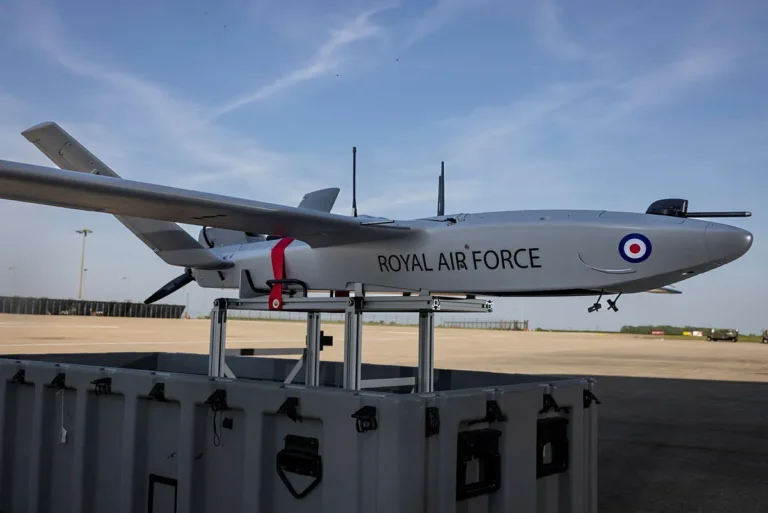Follow Us:

Share
Australia’s push for sovereign defense innovation takes a major leap forward as BAE Systems Australia signs a long-term agreement with Boeing Defense to deliver core flight software for the MQ-28 Ghost Bat uncrewed combat aircraft.
In a pivotal step toward enhancing Australia’s autonomous air combat capabilities, BAE Systems Australia has signed a 10-year Head Agreement with Boeing Defense Australia to provide key software systems for the MQ-28 Ghost Bat, an advanced uncrewed combat aircraft (UCAV).
The agreement formalizes a long-standing collaboration between the two defense giants, bolstering the Ghost Bat’s transition from prototype to a fully operational combat drone.
Announced last week, the contract will see BAE Systems delivering the Vehicle Management System (VMS)—the essential onboard software that enables the aircraft to fly autonomously.

In addition, BAE Systems will contribute to the Ground Control Station (GCS) and the Independent Flight Termination System, two critical safety and control platforms that ensure secure and reliable operation during both testing and missions.
The MQ-28 Ghost Bat, formerly known as the “Loyal Wingman,” represents the first domestically developed combat aircraft in Australia in more than 50 years. Spearheaded by Boeing under its Airpower Teaming System (ATS) initiative, the Ghost Bat is designed to operate alongside manned platforms such as the F-35 Lightning II and F/A-18F Super Hornet, supporting a wide range of missions including surveillance, electronic warfare, and air-to-air combat.
At the heart of this uncrewed aircraft is its autonomous capability—driven by a sophisticated Vehicle Management System that allows the Ghost Bat to navigate, communicate, and carry out operations without a pilot onboard. The system developed by BAE Systems is vital for enabling manned-unmanned teaming (MUM-T) and AI-driven combat support, two cornerstones of future warfare strategies.

Kisa Christensen, Director of Red Ochre Autonomy and Sensors at BAE Systems Australia, highlighted the company’s commitment to building homegrown technology solutions:
“BAE Systems is proud to be a strategic partner on this innovative sovereign program. We are excited to be at the forefront of future autonomous air capability to ensure Australia and its allies can generate the force required to continually meet their operational needs well into the future.”
The Head Agreement builds upon BAE Systems’ early involvement in the Ghost Bat program, which began in 2017 when the company joined Boeing’s efforts to design a cutting-edge drone platform with locally sourced technology and expertise.
The long-term deal now formalizes BAE’s role as a critical capability provider, not only for autonomous flight systems but also for software related to remote control and mission safety.

According to Glen Ferguson, Boeing MQ-28 Global Program Director:
“BAE Systems Australia has been an important capability partner for our Australian industry team. This Head Agreement solidifies our collaboration and sets the stage for future enhancements in critical drone capabilities beyond flight control systems.”
This collaboration underscores the Australian government’s broader defense strategy: strengthening sovereign industrial capability, reducing reliance on imported technologies, and creating jobs in advanced aerospace engineering.
The Ghost Bat program is being hailed as a cornerstone of Australia’s indigenous defense innovation, contributing to both national security and economic resilience.
Read also: U.S Navy’s MQ-25 Stingray Unmanned Tanker
The MQ-28 Ghost Bat achieved its maiden flight in February 2021, marking a significant milestone in autonomous aircraft development. Since then, Boeing has been steadily expanding its testing program, with further trials and evaluations expected to ramp up throughout 2025.
The aircraft’s modular design allows it to be customized for multiple mission profiles, from ISR (intelligence, surveillance, reconnaissance) to electronic warfare and even air-to-ground strike roles.
Designed to act as a “loyal wingman,” the Ghost Bat can accompany manned fighters, helping protect them from threats, extend sensor range, or absorb enemy fire in contested airspace. Its ability to operate in swarms or small formations opens up a wide range of tactical possibilities that were previously unfeasible with only manned aircraft.
The drone’s development is also in line with growing global interest in uncrewed aerial systems (UAS) and autonomous combat solutions. As geopolitical tensions and the speed of technological change increase, countries like Australia are investing heavily in systems that provide both flexibility and survivability in high-threat environments.
The MQ-28 Ghost Bat is more than just a drone—it represents a leap into a future where artificial intelligence, machine autonomy, and man-machine collaboration define the battlefield. The VMS developed by BAE Systems will be central to how the Ghost Bat makes split-second decisions, avoids obstacles, responds to changing mission parameters, and collaborates with manned aircraft in real time.
As nations modernize their air forces, investments in next-generation combat aircraft like the Ghost Bat are expected to reshape how military planners think about air dominance. The 10-year agreement between Boeing and BAE Systems paves the way for further capability expansion—including potential weapons integration, advanced sensor payloads, and interoperability with allied forces.
Share
Defense Feeds is publication focusing on informing, engaging, and empowering the world by providing accurate information from defense technology.
Powered by Defense Feeds © 2025 – All rights reserved.